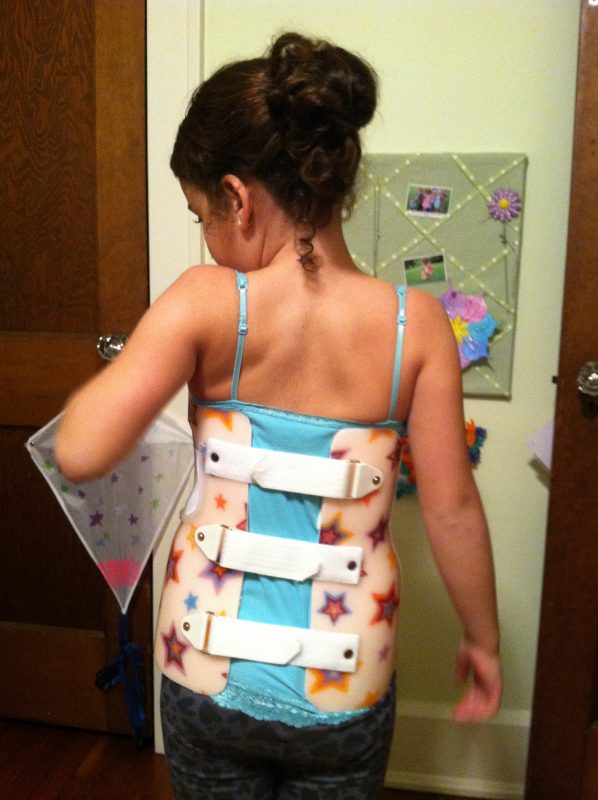
Maya King was diagnosed with idiopathic juvenile scoliosis at age 7. She was fitted for her first Boston brace that same year to help stabilize her scoliosis curve.
Tallmadge High School sophomore Maya King, age 15, barely remembers a time when scoliosis wasn’t part of her life. Diagnosed with juvenile idiopathic scoliosis at age 7, Maya and her family are doing everything in their power to keep her curve from progressing. One of the main reasons, according to Maya’s mom, Laura, is so she can finish out her high school experience without needing surgery.
Laura says there were no signs that anything was amiss when she took Maya to her 7-year-old well check in 2012 with pediatrician, Dr. Larry Handwork.
“We are grateful he noticed the curve so we could start treatment right away,” she said.
Brace therapy
Initially Maya was prescribed a Boston brace, constructed of a custom-fit lightweight plastic that she wore under her clothes for 23 hours a day. This type of brace acts as a holding device to keep the spine from developing more of a curve.
After a year and a half, Maya’s orthopedic surgeon, Dr. Todd Ritzman, wanted to give her a break from the brace.
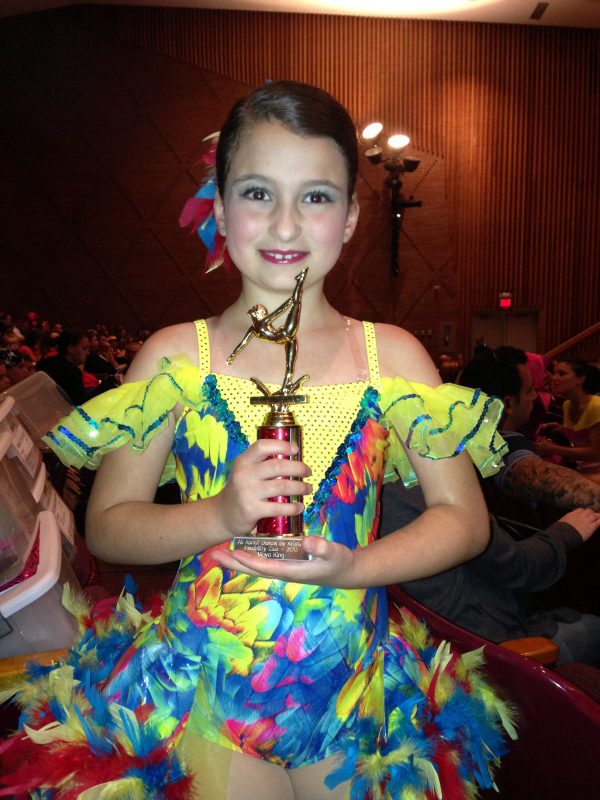
Maya has been dancing since age 3. In June 2013, she received a “Flexibility Award” for achieving all 3 of her splits.
“Maya was extremely committed to brace therapy and demonstrated consistent, compliant brace wear,” said Dr. Ritzman. “Accordingly, after about 1 ½ years of bracing, her curve decreased to under 20°, and we rewarded her with a holiday from bracing. We anticipated she had significant growth remaining which meant resuming the brace if her curve progressed.”
Between 3rd and 4th grade, Maya, who is very active as a dancer and practices ballet, pointe, lyrical, contemporary, tap and jazz, celebrated not having to wear a brace.
“The good news is I had not experienced any pain related to my scoliosis,” said Maya.
When she went back for her 6-month follow-up appointment, X-rays showed her curve had progressed. Dr. Ritzman recommended she wear a Providence brace when sleeping. In the middle of 7th grade, Maya’s curve progressed again, and she went back to wearing the Boston brace during waking hours and the Providence brace at night.
“This protocol lasted another 1 ½ years but Maya was able to continue dancing at the same level throughout her scoliosis treatment,” said Laura. “By 9th grade, Dr. Ritzman determined Maya had stopped growing and the braces were no longer helping.”
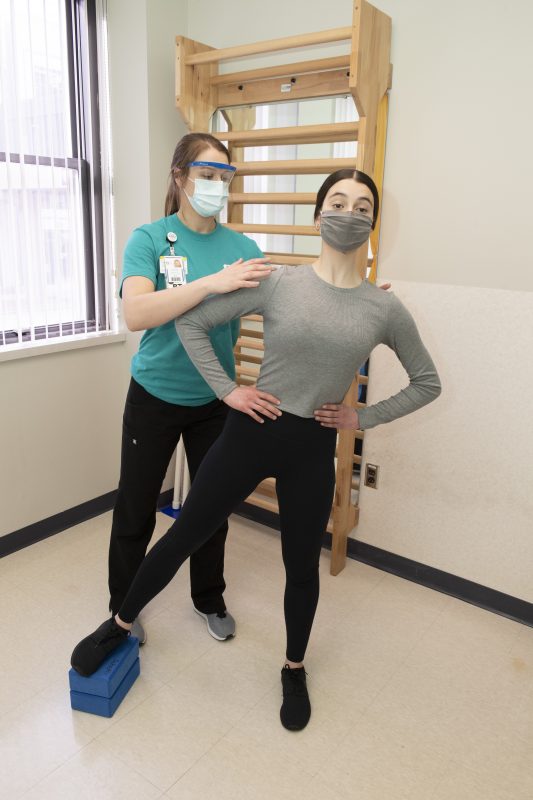
Maya has been working with physical therapist, Amanda Videmsek, who is specially trained in Schroth therapy. The Schroth method uses hands-on techniques to assist patients with active 3-dimensional curve corrections
Managing the pain
While Maya celebrated no more braces, she also started to suffer an unexpected side effect that she hadn’t experienced before—pain.
“I was having pain in my upper right side and my lower left side which is common for where my curve is positioned,” said Maya. “It hurt so bad it often left me in tears.”
Referred to physical therapy to help with her pain, the family got a call that would help turn things around.
“In 2019, we got a call from Amanda Videmsek, a physical therapist who told us about a new therapy method called Schroth the hospital was introducing,” said Laura.
Schroth therapy treatment
“Schroth is a nonsurgical approach to idiopathic scoliosis that uses hands-on techniques to assist patients with active 3-dimensional curve corrections,” said Amanda, who is one of 2 certified Schroth trained therapists employed by the hospital.
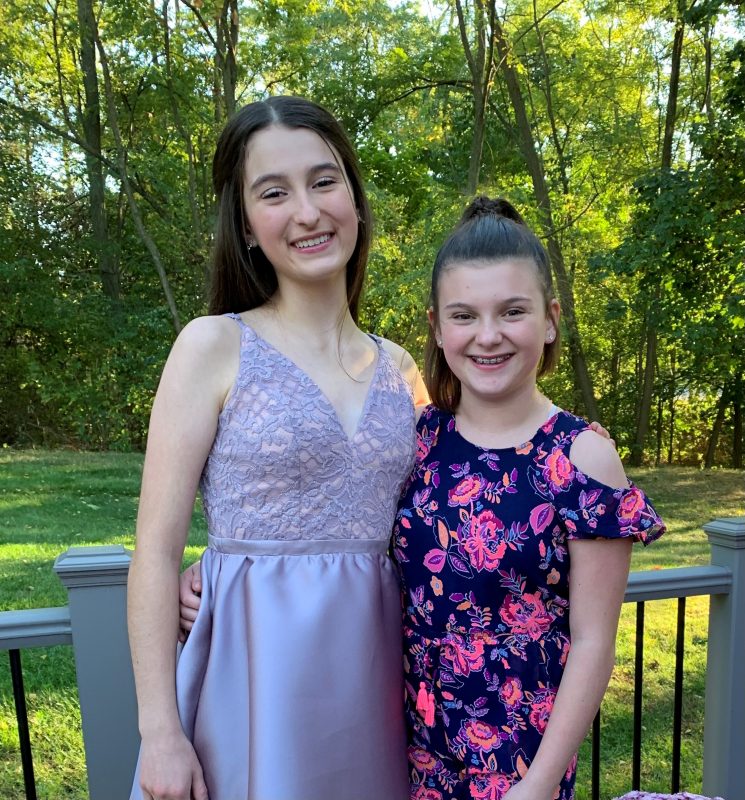
Maya posed with her sister, Meadow, in 2019 for her freshman homecoming dance.
Amanda uses customized exercises and a 3-dimensional approach to help elongate and stabilize the spine in patients with scoliosis. Exercises can be done sitting, kneeling, standing or laying down. Amanda often uses props like yoga blocks and straps for passive support.
“We use small, isolated movements to help build the core muscles around the spine,” she said. “Breathwork is an important component of this therapy to improve respiratory function and increase symmetry in the ribcage.
“Gravity plays a huge role in the progression of scoliosis,” she added. “We do side lying work to use gravity to our advantage. Sitting and standing exercises use active muscle correction to overcome gravity.”
Maya began seeing Amanda twice a week for a month and then bumped down to once a week for another month.
“We have a high frequency of sessions at the beginning to help patients master the exercises and then we develop a home exercise program,” said Amanda.
Maya had originally been scheduled for a spinal fusion in July 2020. While her curve progressed slightly since her last visit, it had not progressed past a point making surgery absolutely necessary. Although, there are no guarantees Maya won’t need surgery down the road.
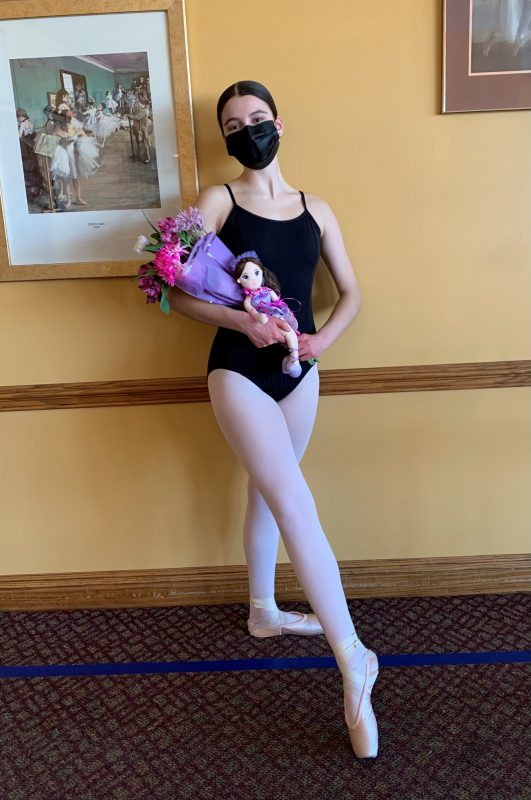
In March of this year Maya completed the Cecchetti Council of America Classical Ballet Grade VI exam.
Future outlook
“We wish we could eliminate the need for surgery altogether, but that isn’t our goal for every patient,” Amanda said. “If we can reduce their pain and improve their quality of life for a period of months or years, we consider that a win.”
Following a regimen of 15 minutes of exercises, 5 times a week, Maya now has far more positional awareness when she’s sitting in school, watching TV or even picking something up off the floor.
“I know how to position my body to help avoid or reduce pain,” she said.
“Maya knows doing her exercises has to be a long-term habit if she wants to remain pain-free,” said Laura. “Our goal is to try and get her through high school without surgery so she can continue to do the things she loves, like dance.”
In December 2020, Maya’s top curve was between 44-51° and her bottom curve was at 42° which places her in a monitoring phase.
“In skeletally mature patients, curves between 40° and 50° have the potential to stabilize,” explained Dr. Ritzman. “If Maya’s curve were to never progress, she wouldn’t require surgical intervention and would continue to maintain spine health through fitness and physical therapy throughout adulthood.”
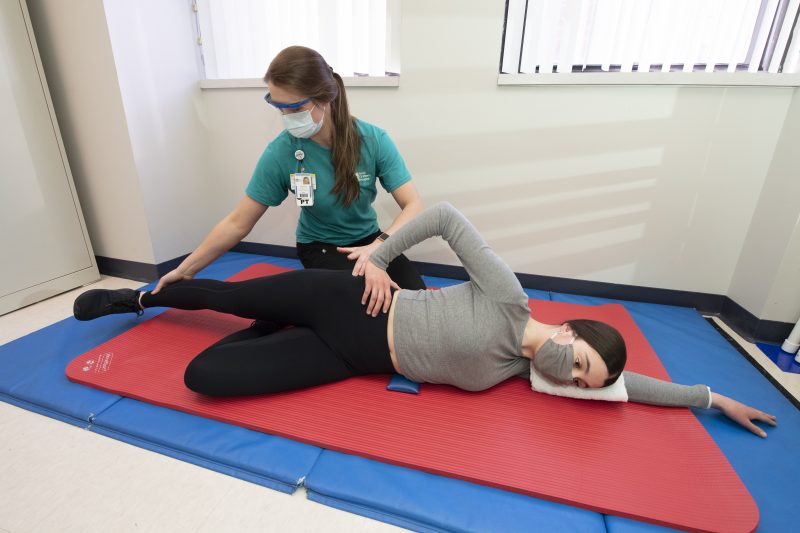
Since gravity plays a role in the progression of scoliosis, Maya and Amanda practice side lying exercises in order to use gravity to their advantage.
Maya will continue to be monitored with low dose imaging to identify if her curve progresses beyond 50°.
“If that were the case, I’m confident she will be an excellent candidate for corrective spinal fusion surgery,” said Dr. Ritzman.
Maya says she appreciates that Dr. Ritzman has been so upfront and open with her about what to expect.
“He’s super nice and he’s not afraid to tell me the truth,” she said. “He has a daughter my age so he gives me the perspective of what he would do as a parent which I know my mom is also grateful for.”
Learn more about scoliosis and explore the treatments offered at the Spine Center, an Akron Children’s Center of Excellence.










